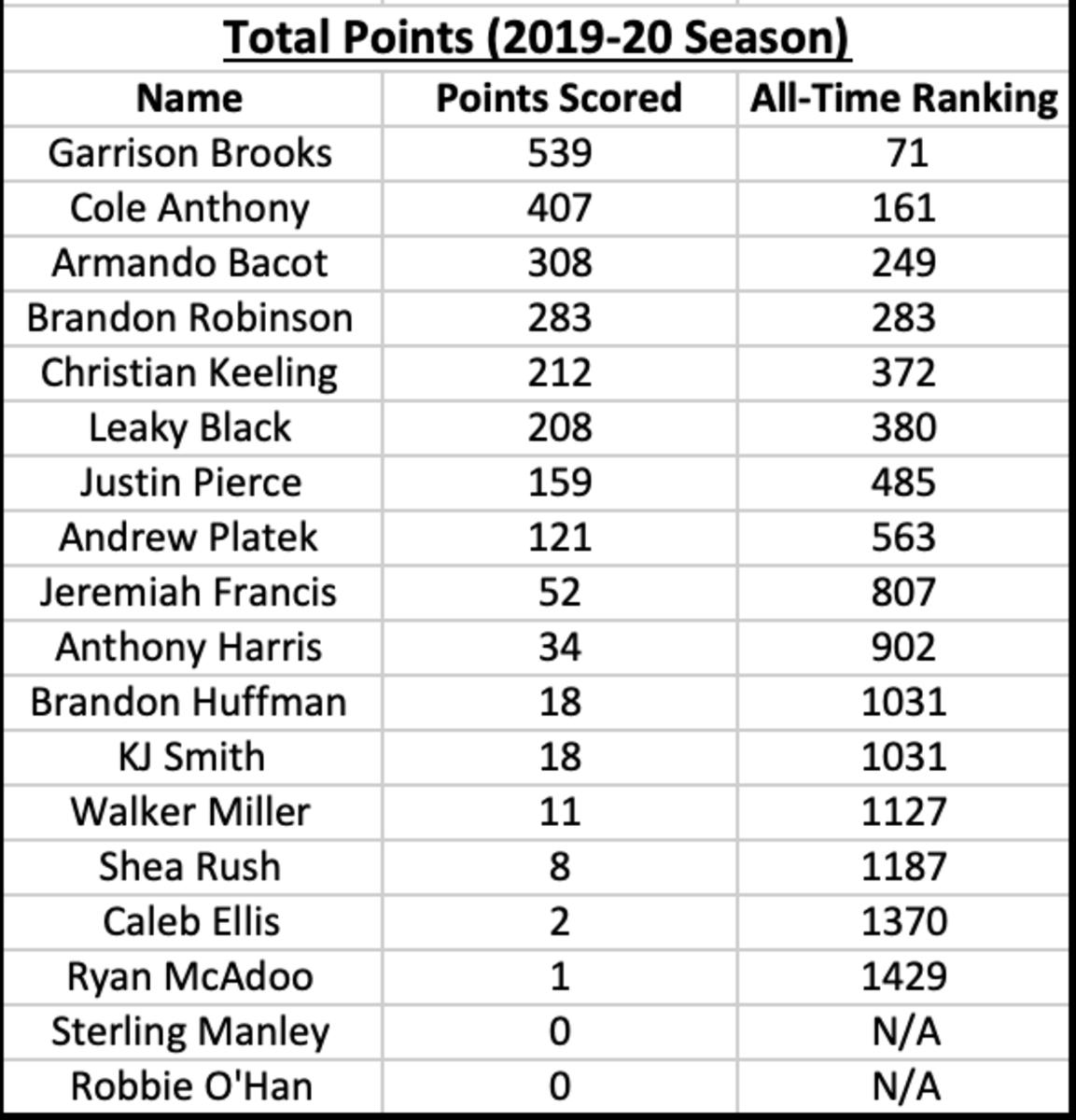UNC Basketball: 2019-20 Stats in Review - Total Points
Stories. Statistics. They are two quite different entities.
By nature, stories are subjective. They weave together a tapestry of beautiful images to help paint a picture of a moment in time. Different people remember events in their way. People forget the order of how things happened. Everyone’s vantage point is at least slightly nuanced from others who encountered the same experience.
Statistics, on the other hand, are (mostly) objective by nature. Two plus two equals four. Always. So let it be. It doesn’t matter who you are, that equation is always true.
Now wait a second, why are stats only mostly objective? Because, while the math is always the same, stats can be used to paint just about any picture you want them to.

Fantasy Football guru Matthew Berry often points out this very reality concerning the subjective nature of stats. He does so most notably in his annual “100 Facts” column. The premise is that he, and really anyone, can use stats and in-depth statistical analysis to make whatever argument needs to be made.
For example, in last seasons’ iteration of the “100 Facts” column, Berry compared Quarterback “A” with Quarterback “B”. QB “A” was trash. He had several horrible statistical numbers and was near the bottom of the NFL in every category listed. QB “B” however was a rising star and someone you would definitely want on your fantasy football team.
Why do I share this illustration?
What’s the catch?
Obviously, I’m avoiding QB “A” like the plague and I’m trying to grab QB “B” for my squad.

Here’s the thing. In Berry’s illustration, both quarterbacks were the same guy: Buffalo’s Josh Allen.
All this is to say that stats don’t tell the whole story. But they do tell a story. They do tell part of the story. And, as Matthew Berry says, it’s up to you to decide how to interpret that data.
I tell you all this because, over the next several weeks, I’m going to review the stats from the 2019-20 North Carolina basketball team, one category at a time.
While these stats won’t tell the whole story of the previous season, they will help provide context and insight for both the present and historical context.
Today we start with total points. The following chart will list each player, how many points they scored, and where they ranked in the Carolina history books for total points scored in a single season.
2019-20 UNC Tar Heels: Total Points

Observations
- Garrison Brooks led the team with 539 points. In the Roy Williams era (17 seasons – 2003-04 through 2019-20), that’s the fourth-lowest total for the team leader (2009-10: Deon Thompson, 507; 2012-13: James Michael McAdoo, 518; 2014-15: Marcus Paige, 534).
- Only two players (Brooks and Cole Anthony) scored 400+ points. That’s happened only three other times in the Roy Williams era (2003-04, 2009-10, 2013-14).
- Only three players (Brooks, Anthony, and Armando Bacot) scored 300+ points. That’s also only happened three other times in the Roy Williams era (2005-06, 2010-11, 2012-13).
- Cole Anthony was second on the team with 407 points scored. This is the next-to-lowest total for the second-leading scorer in the Roy Williams era (2009-10: Will Graves, 353).
- Armando Bacot was third on the team with 308 points scored. That is the lowest total for the third-leading scorer in the Roy Williams era.
- Brandon Robinson was fourth on the team with 283 points scored. That is the third-lowest total for the fourth leading scorer in the Roy Williams era (2005-06: Danny Green, 231; 2010-11: Dexter Strickland, 279).
Conclusions
Once again, numbers don’t tell the whole story, but they do help tell the story. So what story do these numbers help tell?
First off, it’s important to keep in mind that these lower point totals are, in part, due to the fewer number of games played in 2019-20 (no postseason). Also, several of these lower point totals are due to games missed as a result of injury (Cole Anthony, for example).
The biggest takeaway, though, is that these numbers are indicative of a difficult season. Look at some of the teams that the 2019-20 season compared with the numbers above:
- 2003-04: Roy’s first as head coach. Finished 8-8 in the ACC and lost in the 2 Round of the NCAA Tournament
- 2005-06: Year after several key departures from a National Championship team. Lost in 2 Round of NCAA Tournament.
- 2009-10: Year after several key departures from a National Championship team. Finished 5-11 in the ACC and went to the NIT.
From day one, Coach Williams said that this team would struggle to score. Most of Tar Heel nation chalked this up to coachspeak. Turns out Coach knew what he was talking about all along.
Here’s to hoping we don’t hear that same phrase come spilling out of his mouth again this season.
Next stat to investigate: Rebounding.
You can follow us for future coverage by clicking "Follow" on the top righthand corner of the page.
Follow us on Twitter: @UNConMaven | @isaacschade
Please post any comments below!
